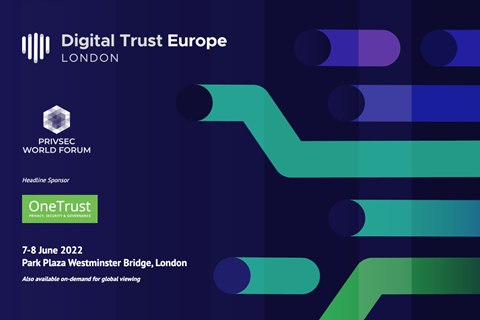ESG is like disruptive technology, and established market players never do like disruption.

When executives from Microsoft pitched their big idea to Encyclopaedia Brittanica, they got short shrift. The famous publisher based its business model on selling encyclopaedias door to door. Many of those at the top of the company had earned their spurs that way. And what did Microsoft want them to do? Nothing less than putting their premium product on a CD ROM. It wasn’t that senior management at Brittanica could not perceive the opportunity. The challenge was more subtle than that. The company was structured so that adopting the Encarta model was nigh on impossible. Many of those within the company no doubt thought: “We don’t sell toys.”
So Microsoft produced Encarta instead, and in 1996 the two-hundred-year-old Encyclopaedia company was forced into a distressed sale.
That’s the thing about disruptive technology, it disrupts, and for the disrupted, it hurts. And while disruptive technology often leads to improvements, the journey can be messy. People don’t like it.
Encyclopaedia Brittanica didn’t like it, nor did Blockbusters, Kodak, Nokia, or RIM/Blackberry.
“What! And cannibalise our product?” said the ‘disruptees’ in the making.
Second chance
What I like about the tale of Encyclopaedia Brittanica is that it got a second chance. It returned with a new niche — an alternative to Wikipedia with entries produced by qualified experts rather than crowdsourced.
Microsoft’s Encarta could not compete with Wikipedia, and the disruptor became the disrupted.
Innovators’ Dilemma and ESG
The late Harvard Professor Clayton Christensen developed the classic theory concerning disruptive technology, known as Innovators’ Dilemma.
Here are some observations regarding Innovators’ Dilemma:
- Disruptors often become disrupted themselves, eventually.
- First mover advantage and specialisation are vital — by the time companies spotted the reality of the disruptive threat, they had left it too late to respond.
- Resistance is futile but common. Companies don’t like the idea; their corporate culture is often geared towards resisting the very nature of what this disruption means — it’s the ‘we can’t cannibalise our own product’ rationale.
- Often the techies and engineers have a better feel for the disruption than the marketing people.
- Customers are often late in understanding why a new disruptive technology will benefit them — for example, Apple’s research suggested people didn’t want a touchscreen phone.
- The Innovator’s Dilemma theory itself was very unpopular, mainly because it contradicted what was considered best business practice
- ESG is like a disruptive technology— but maybe not entirely.
Predictability
The thing about disruptive technology is that it is notoriously difficult to predict. To avoid the great gales of disruptive technology that could blow their way, companies must experiment and practice an agile business strategy. I am not sure ESG fulfils that criteria; I think it is eminently predictable. But it fulfils the other criteria, which is why many companies and individuals rail against it.
Ecosystem
But if we should have learned anything in 2022, it is the complexity of the supply chain.
You can’t significantly change your supply chain overnight, or maybe not even over a year.
The supply-chain forms part of the ecosystem that makes an organisation what it is.
That is why disruptive technology can be so hard to compete against; the disruptor creates a supply chain and ecosystem that might be impossible to replicate.
The company that leaves it late might never get a chance.
According to one paper studying the tale of Encyclopaedia Brittanica and Encarta: “Britannica’s management did not misperceive the opportunities and threats, and Britannica did not lack technical prowess. … Britannica’s management faced organisational diseconomies of scope between supporting lines of business in the old and new markets, which generated internal conflicts. These conflicts hindered the commercialisation of new technology and hastened its decline.”
In short, the problem was corporate culture.
Cannibalise or be eaten
Someone once told me that to avoid the ravages of disruptive technology, you have to cannibalise your product, or you will be eaten. “Cannibalise or be eaten.”
And isn’t that part of the point regarding ESG as an investment strategy?
Cannibalising your product hurts. It hurts companies that have invested so much into doing things a certain way. It hurts investors, too, especially when they have come to rely on dividends from certain assets.
The disruptive technology called ESG will probably turn those assets into stranded assets. But for companies and their shareholders who might have invested a lifetime into those assets, there are so many reasons to resist, to persuade themselves that the risk is exaggerated; it is human nature.
But actually, the argument is quite simple. Companies that adopt good sustainability, environmental and social policies and wrap good governance around it all are effectively embracing the disruptive technology called ESG and are more likely to triumph.
Those that don’t will be left playing catch-up.
And they might never manage it.
ESG World Forum
7-8 June 2022, Park Plaza Westminster Bridge, London
Part of the Digital Trust Europe Series
ESG World Forum is a two-day, in-person event taking place as part of the Digital Trust Europe series. 2021 was widely considered “the year of ESG investing.” Given the importance society has placed on ESG issues following COP26, we are likely to see this growth trend continue throughout 2022.
ESG World Forum will bring together a range of leading ESG experts and executive speakers from a range of industries as every major company is considering ESG strategies.
FIND OUT MORE & REGISTER TODAY!























No comments yet